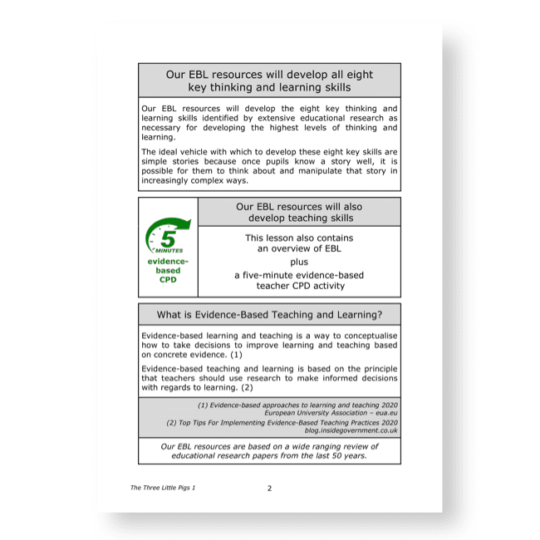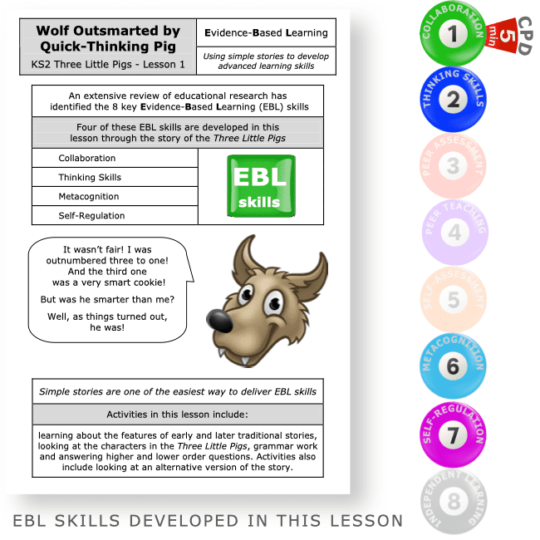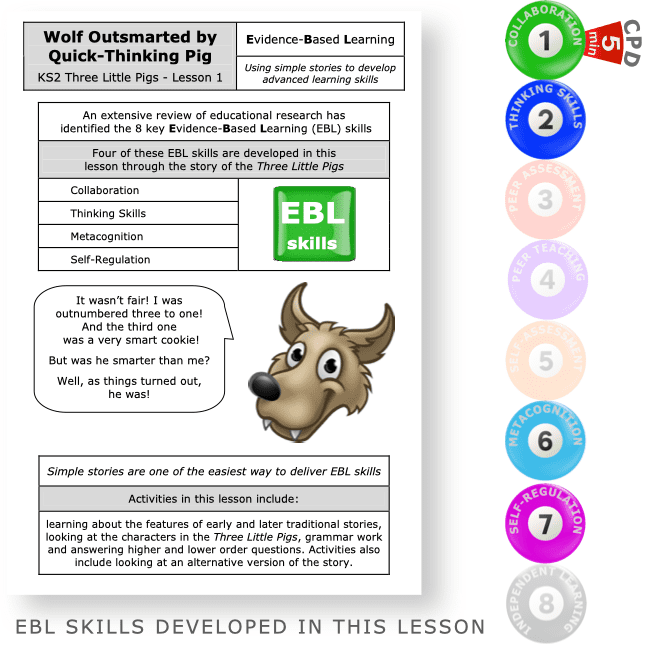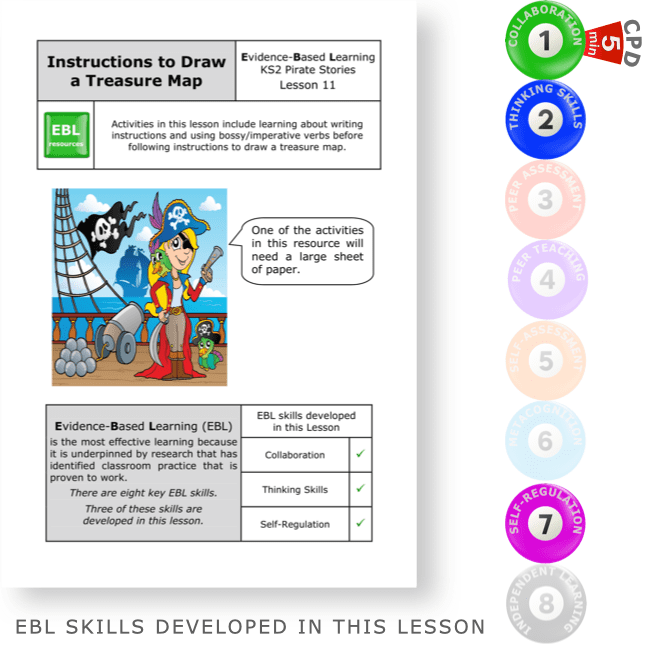Y5 Learning About Legends
£3.00
KS2 National Curriculum:
✓ Identifying traits of legendary characters and their actions
✓ Exploring story elements such as setting, heroism, exaggeration, and moral impact
✓ Completing collaborative tasks using a shared text
✓ Presenting findings based on evidence from the eBook
Activities in this lesson include learning about the features of legends, looking at St. George and the Dragon and Robin Hood and looking at how legends are structured so that the following questions can be answered; ‘What are legends about? When were legends written? What type of characters are in legends? Are legends true?’
There is a five-minute evidence-based CPD activity at the end of this lesson which will develop classroom teachers’ skill set. This CPD consists of a research extract on collaboration with a five-minute activity based on this extract.
Description
Recommended Year Group: Year 5
Focus: Understanding the key features of a legend
Skills Developed:
• Identifying traits of legendary characters and their actions
• Exploring story elements such as setting, heroism, exaggeration, and moral impact
• Completing collaborative tasks using a shared text
• Presenting findings based on evidence from the eBook
• Reading – Comprehension: Retrieve, explain and summarise information
• Spoken Language: Take on discussion roles (scribe, chair, spokesperson)
• Thinking and Learning: Collaborative reflection, group learning roles
These evidence-based learning (EBL) lessons are based on classroom practice that has been proven, by research, to maximise thinking, learning and attainment. From an extensive review of educational research, we identified the eight key classroom thinking and learning skills that were common across these research papers. We named these eight key skills “EBL skills”.
EBL skills have been proven by research to maximise learning because they combine the most productive thinking skills with the most effective learning behaviours. Each of our evidence-based learning lessons uses the English curriculum as a framework through which the eight EBL skills are delivered.
Teachers also have the opportunity to add to their own skill set or refresh their existing skills with our five-minute CPD activity, based on one of the EBL skills used in this lesson.
The skills in bold below are the EBL skills developed in this Legends lesson. Click on each skill to learn more about that skill.
- Collaboration
- Thinking Skills
- Peer Assessment
- Peer Teaching
- Self-Assessment
- Metacognition
- Self-Regulation
- Independent Learning
1 review for Y5 Learning About Legends
Only logged in customers who have purchased this product may leave a review.
Related products
-


Y5 The Cook is really Long John Silver
£3.00 Add to basket £3.00Add to basket
£3.00Add to basketKS2 National Curriculum:
✓ Understanding bartering, currency, and trade in historical context
✓Explaining why treasure is buried and how maps are created
✓Completing a pirate plot story mountain
✓Exploring openings to pirate storiesThis lesson looks at why gold became so important and it introduces the concepts of bartering and trade. It also looks at why gold needed to be buried and considers the key role played by treasure maps in the plots of pirate stories. It also looks at the need to include good and bad characters. Activities include completing a story mountain outlining a possible plot for a pirate story and a task based on pirate story openings.
There is a five-minute evidence-based CPD activity at the end of this lesson which will develop classroom teachers’ skill set. This CPD consists of a research extract on collaboration with a five-minute activity based on this extract.
VIEW -


Y5 Alice, the White Rabbit and the Portal
£3.00 Add to basket £3.00Add to basket
£3.00Add to basketKS2 National Curriculum:
✓ Identify themes and conventions
✓ Understand story structure
✓ Develop speaking and listening through partner workActivities in this lesson include exploring the key components of fantasy stories: real and imaginary settings, real and imaginary characters, good vs evil, real journeys vs portals, the passing of time and the use of magic. Activities also include answering higher and lower order questions.
There is a five-minute evidence-based CPD activity at the end of this lesson which will develop classroom teachers’ skill set. This CPD consists of a research extract on collaboration with a five-minute activity based on this extract.
VIEW -


Wolf Outsmarted by Quick-Thinking Pig
£3.00 Add to basket £3.00Add to basket
£3.00Add to basketActivities in this lesson include learning about the features of early and later traditional stories, looking at the characters in the Three Little Pigs, grammar work and answering higher and lower order questions. Activities also include looking at an alternative version of the story.
There is a five-minute evidence-based CPD activity at the end of this lesson which will develop classroom teachers’ skill set. This CPD consists of a research extract on collaboration with a five-minute activity based on this extract.
VIEW -


Instructions to Draw a Treasure Map
£3.00 Add to basket £3.00Add to basket
£3.00Add to basketActivities in this lesson include learning about writing instructions and using bossy/imperative verbs before following instructions to draw a treasure map.
There is a five-minute evidence-based CPD activity at the end of this lesson which will develop classroom teachers’ skill set. This CPD consists of a research extract on collaboration with a five-minute activity based on this extract.
VIEW






Philipem (verified owner) –
We asked a.i. to review this lesson. This is what it said:
Unlocking Legends with St George: A ⭐⭐⭐⭐⭐Resource
Seeking an engaging way to advance literacy and critical thinking hand-in-hand? This exceptional KS2 legend lesson exploring the legend of St George is a complete English resource ideal for improving reading, writing, comparison and more.
Students will analyse the key features of legends, applying this knowledge to examine the myths of St George and Robin Hood. Identifying structural and language devices gets pupils evaluating stories on a deeper level. Answering higher order questions then puts enhanced comprehension into practice.
Group work and individual thinking seamlessly integrate vital evidence-based skills too. Collaborative talk strengthens linguistic and cognitive abilities. Self-review teaches students to critically evaluate their own learning. And the 5 minute teacher CPD models reflective technique – considering an activity’s success to improve future lessons.
With its blend of reading, analysis, discussion and critical thinking via individual and collaborative tasks, I’d give this ready-to-use St George legend lesson 5 stars. It meets UK curricula for advancing literacy and 21st century skills through cross-curricular content. Students will love comparing the heroic myths as they advance communication skills with this high quality package.